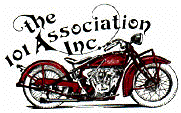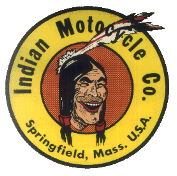Indian started with tricycles that could carry a passenger or a box already -06 and 1912 came a dedicated Indian sidecar and "delivery van" as they called box cars then. The tubs evolved during the years in at least 3 variants.
The next line of sidecars at the Indian factory came in 1922 for the new Chief -Princess- and the new tub was also fitted to the Standard PP on its old chassie. The Princess evolved in at least 3-4 variants until -43 when it was superseded by the "Sport" tub.. A commercial sidecar was produced for the Scout at the same time, but I don't know if the Scout was offered with a Princess or some other lighter tub for personal transport.
Commercial car bodys came in 6-7 standard configurations, but could be custom ordered in any shape and size that you wanted on a couple of standard or custom ordered chassis.
1928 came the smaller and lighter Sweetheart for the Scout and it was popular with the Four as well. I am not certain when the Sweetheart was terminated but perhaps early to mid 30's, probably by cuts in the production when the Scout got the Chief frame. I have seen 2 variants of them + my own left hand version.
There where several sidecar chassis for the Indian line of bikes at that time. Not all variants are shown in the -28 sidecar spare parts catalog. I think all came in left or right hand versions. There is a lightweight version (looks like an "A"), medium weight (looks like a "D") and those where used mainly on the Scout and perhaps Four. And for the Chief, there was a heavy duty chassie (double tube, looks like a combination of an "A" and "D" version).
The commercial versions are basicly the same chassis but with another spring arrangement, but there was also an extra wide thread heavy duty version, for wide body cars, flatbeds and boxes.
Scout chassie has a different front tube section than the Four and Chief and can't easily be adapted to the other bikes. Four and Chief frames are longer by a couple inches and thus uses a longer chassie version. But in a pinch all chassis can be modified and adapted with custom connectors to fit either bike.
The Sweetheart tub is narrower and shorter than the Princess but either tubs can be fitted to any of the chassis with some work. Maybe with the exception of a Princess in a narrow lightweight chassie? The commercial lightweight is wider between the spring bases.
The Indian factory started to build the 3 wheel Dispatch-Car and Dispatch-Tow in 1931 and the 3 wheeler line was later extended with the larger Indian Traffic-Car. Patent drawings of the Traffic car was filed as early as 1932.
I haven't read it myself, but there is a booklet about Indian sidecars that can be bought from Indian Vintage Cycle Bay and possibly other retailers as well. "Pictorial history of the Indian sidecar 1912-53"


